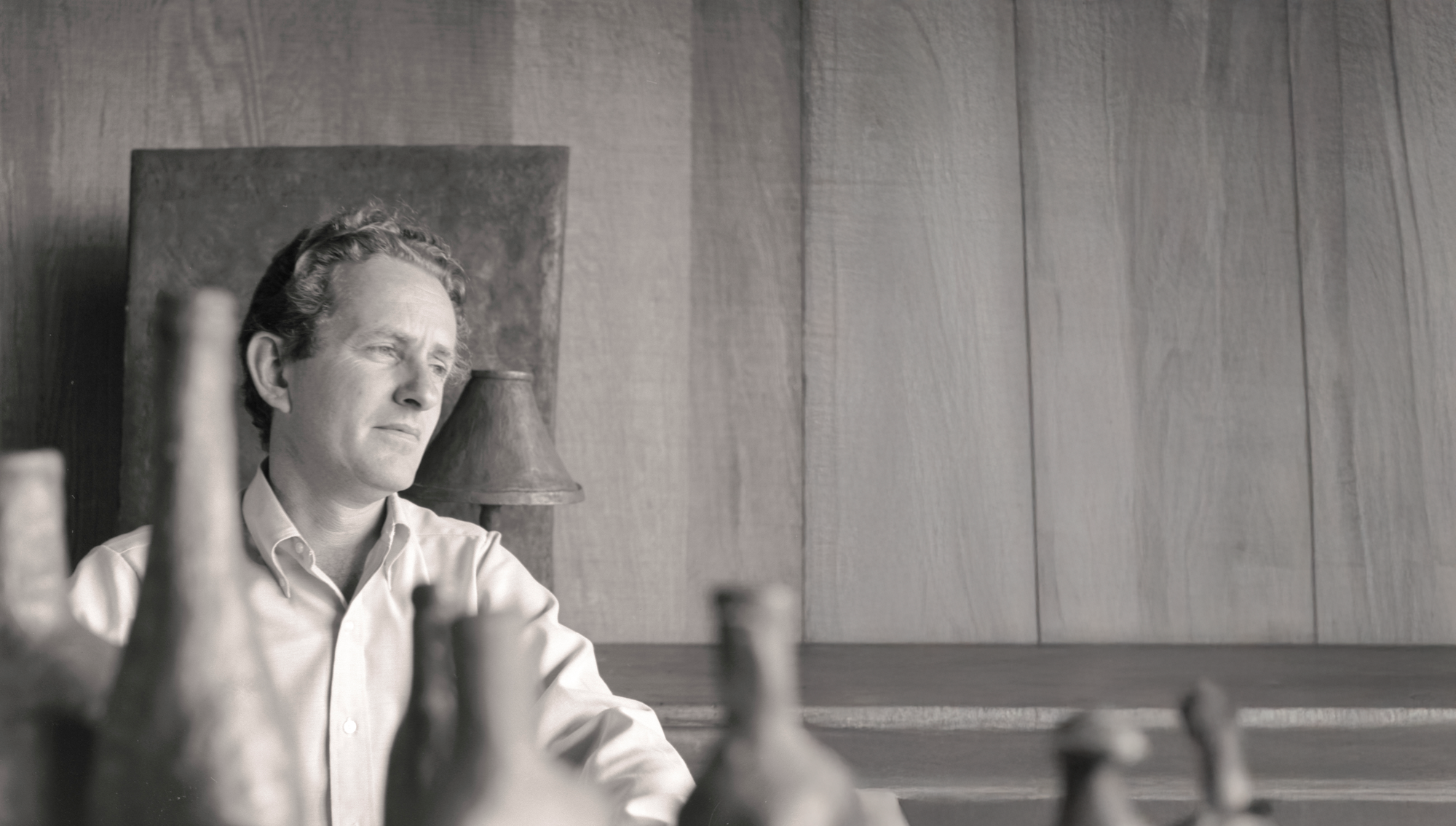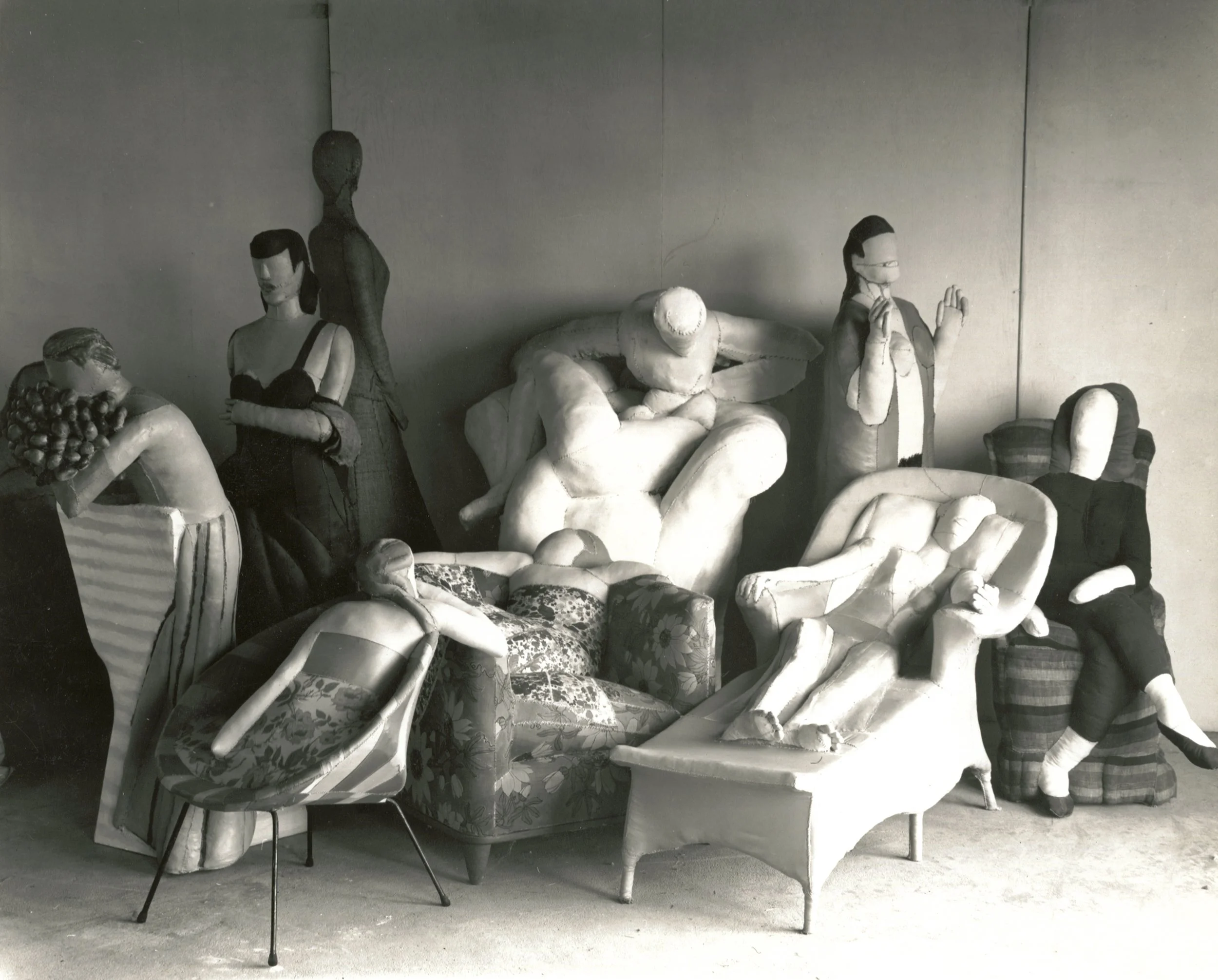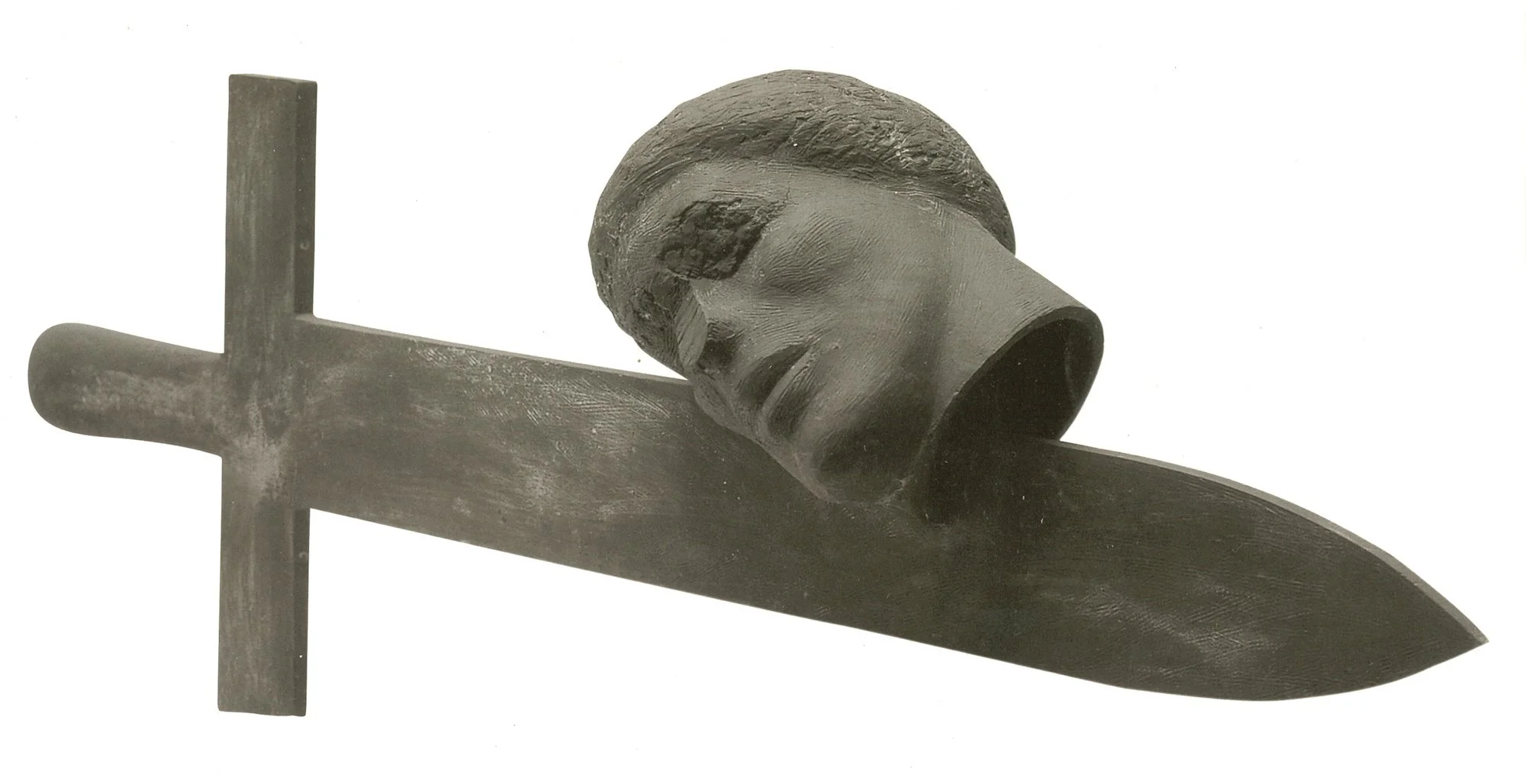
Biography
by Leah Triplett
With a career spanning most of the twentieth century, Paul Harris (1925-2018) evaded definition materially, thematically, and aesthetically as he confidently forged his own path in art and life.
His formal training in painting, Harris’s media ranged from crayon and pencil to oil paint, fabric, and bronze. Likewise, having come of age as an artist in the effervescent 1950s, when stylistic allegiance was paramount, Harris was singularly comfortable across the spectrum of abstraction and figuration in two or three dimensions. In drawing, printmaking, and painting, his markmaking is richly lyrical, with spirited colors in vibrant dynamism; his bronze and soft sculptures are expansive in form and shape, their intricacies in surface betraying his early training in painting. Harris made lifelong friends on both sides of the aesthetic aisle early in his career, including Richard Diebenkorn and Elaine de Kooning, as he found his particular confidence using both recognizable, familiar imagery from nature with psychologically charged mark making, no matter the medium. Throughout his life, Harris was faithfully disciplined, consummately passionate, boldly experimenting with form, content, and media to find his fullest expression.
Born in Orlando, Florida, Harris’s mother passed away when he was five years old; perhaps it was this early loss that propelled him to constantly, steadfastly search out new modes of artistic articulation. He was first introduced to the arts by his stepmother, dancer Helga Ebsen (who married his father Julian in 1936), and her sister Vilma Ebsen. The sisters took the young artist from Florida to Pacific Palisades, California, in the summer of 1943, so he could study at Chouinard School of Art while working as a riveter at Douglas Aircraft in Los Angeles. This journey was perhaps just the earliest trip in a lifetime of travel for art, which took him across the country as well as to Chile, Jamaica, and beyond. After his 1944 high school graduation, Harris enlisted in the Navy, shipping off to the Pacific Theater on the USS Ault in December of that year. Onboard, he routinely drew his shipmates and made lasting friends, including one from New Mexico who inspired Harris to study there after his release from the Navy. In 1946, Harris enrolled at the University of New Mexico, where Agnes Martin was a classmate, and where he quickly made friends with Richard Diebenkorn and his wife, Phyllis. This also started a period of fervent and formative education (by 1955, he had a BFA and MA degree from UNM and an EdD at Teacher's College, Columbia University). Harris journeyed to the Northeast in 1948, where he first studied with Johannes Molzahn at the New School for Social Research in New York and in the summer of 1949, with Hans Hoffman at his celebrated school in Provincetown, Massachusetts, where Elaine de Kooning was an upstairs neighbor in his waterfront studio.
Seaman, Cook (Ralph), 1945, pencil on paper,
18 ½ x 14 ⅜ inches
Study While on Watch, 1945, pencil on paper,
11 ¾ x 9 inches
Finding a buddy, confidante, and like-minded figurative abstractionist in de Kooning, the two struck up a conversation that would last decades, mostly through their frequent letters and postcards to each other. Also in 1949, Harris became engaged to Marguerite Kirk, who would become his faithful and devoted partner as the couple raised two sons, lived abroad (teaching in both Chile and Jamaica), and built a life supported by Harris's long career in teaching.
Publication announcement for Phases of the Moon (1995)
Installation view of The Light Hearted Woman, 2003, bronze, 26 x 18 x 15 inches
The pair and their two sons, Christopher and Nicholas, settled in Bolinas, California, in 1963, near their friends the Diebenkorns, and at first moved into a house that had previously suffered a fire. Finding discarded mattresses and clothes from the former owner, he set to work rehabilitating them into artworks, manipulating, sewing, and stuffing them. In 1968, Harris began teaching at California College of Arts and Crafts, an institution offering classes across disciplines; this prescient interdisciplinarity put the school at the forefront of every major art movement of the 20th century. Harris–with this tenacity for crossing genres, styles, and disciplines–was a beloved teacher until his retirement in 1992. The 1990s began an equally fervid period of making, as he would publish short stories and prints in his book Phases of the Moon in 1995 (published with the imprint he established in 1973-74, Wrongtree Press), worked on bronzes at Shidoni Foundry in Tesuque, New Mexico, and made drawings and cartoons before he died in Montana in 2018.
Fabric sculptures by Paul Harris, undated, Paul Harris Archives
Harris made and exhibited work for over 60 years, vigorously championing the new and nascent in contemporary American art. Harris was an active participant in two of the most critical arteries of advanced American art of the post-war period: Poindexter Gallery, NY (where he first exhibited in 1958 with a solo presentation), and ArtNews (where he was Editorial Associate starting in 1955). Harris exhibited his work starting in 1951, with paintings, drawings, prints, and sculptures included in some of the most significant shows of the cacophonous 1960s and 1970s. Among these are the seminal American Sculpture of the Sixties (1967), curated by Maurice Tuchman, and the watershed Sewn, Stitched and Stuffed (1973-74), curated by Sandra R. Zimmerman, which established textile-based sculpture as a true mode of "high" art. Harris’s vivaciously colored, highly patterned soft sculpture demonstrates a painterly sensibility and a command for expressing emotion through material and formal juxtapositions. They also anticipate installation art of the late 1970s and 1980s in their sense of space and scale. As Tuchman wrote in his introduction to the American Sculpture of the Sixties catalogue, Harris was among the vanguard of San Francisco artists who “present sculpture which incorporates change and is patently vulnerable.”¹ As he developed this practice in the 1960s, he served as a Fulbright professor at the Universidad Catolica in Santiago, Chile, and exhibited his work there as well as across Europe. Throughout the next several decades, he continued to explore the boundaries of form and materiality and exhibited his work to acclaim locally and internationally, completing residencies such as at MacDowell and receiving major awards from foundations, including the Guggenheim Fellowship. His work was the subject of numerous solo exhibitions, most notably in California at the Stanford University Museum of Art, Palo Alto (1981-82) and the Bolinas Museum, Bolinas, in 1999. Noting his sensitivity towards space, one reviewer for the former exhibition called his work “stunning in its simplicity,” his graceful clarity of form belying many long, hard hours with wood, bronze, and fabric. Throughout his last decades, he continued making work while also writing copious correspondence as well as his short stories and giving lectures, all in an effort to share new modes of expression with the world. Always searching out an authentic form for "loneliness, our desperations, our delights," Harris tested material as much as formalism, creating a lifetime of artworks, yearning to make lucid his deepest desires and feelings.
Sundown for Leni, 2005, crayon on paper, 15 ½ x 21 ½ inches
Leah Triplett is a curator and writer especially interested in the convergence of craft, painting, new media, materiality, and globalism. She is currently Curator of Contemporary Art at the Pennsylvania Academy of the Fine Arts (PAFA). With Mallory A. Ruymann, she co-curated STUFFED, a group exhibition featuring twelve female artists working at the nexus of quilting, painting, sculpture, and installation, in lineage with soft sculpture of the 1960s and 1970s.
-
¹Maurice Tuchman, ed., American Sculpture of the Sixties (Los Angeles: Los Angeles County Museum of Art, 1967). Page 12.











